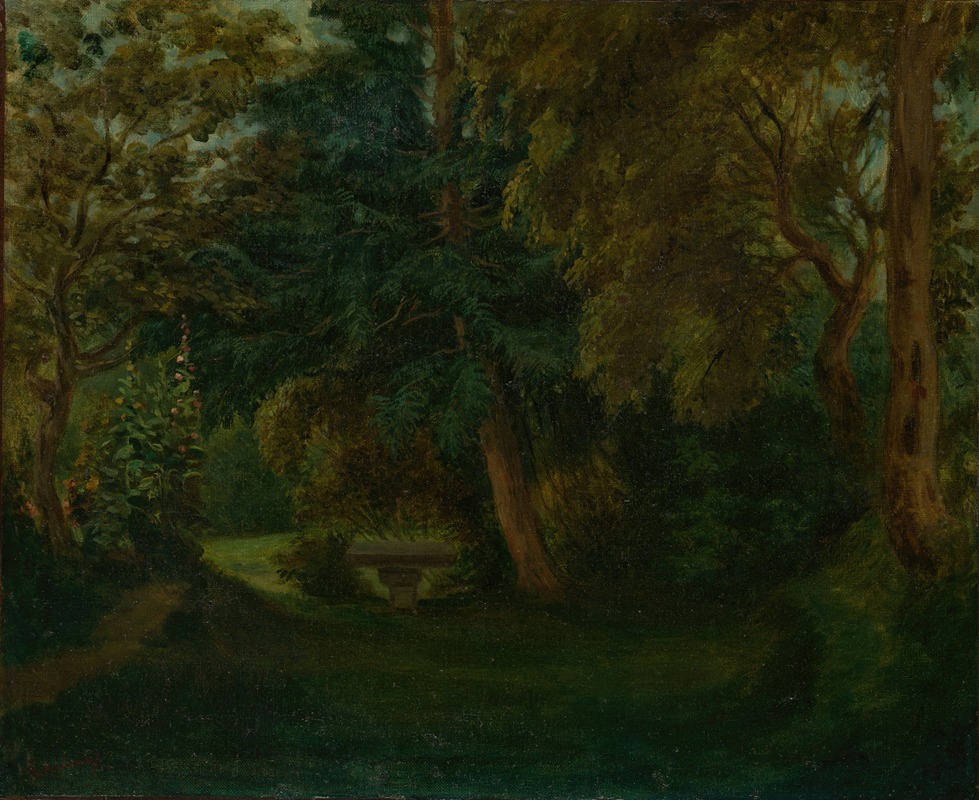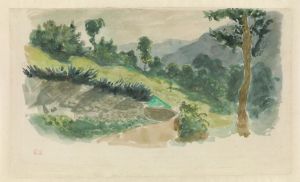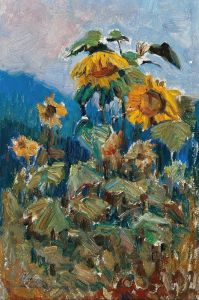
George Sand’s Garden at Nohant
A hand-painted replica of Eugène Delacroix’s masterpiece George Sand’s Garden at Nohant, meticulously crafted by professional artists to capture the true essence of the original. Each piece is created with museum-quality canvas and rare mineral pigments, carefully painted by experienced artists with delicate brushstrokes and rich, layered colors to perfectly recreate the texture of the original artwork. Unlike machine-printed reproductions, this hand-painted version brings the painting to life, infused with the artist’s emotions and skill in every stroke. Whether for personal collection or home decoration, it instantly elevates the artistic atmosphere of any space.
Eugène Delacroix, a prominent French Romantic artist, is celebrated for his expressive brushwork and vibrant use of color. Among his many works, "George Sand’s Garden at Nohant" stands out as a testament to his personal connections and his ability to capture the essence of a place. This painting is a reflection of Delacroix's friendship with the renowned French novelist George Sand, whose real name was Amantine Lucile Aurore Dupin.
George Sand was a significant literary figure in the 19th century, known for her novels, plays, and essays that often challenged societal norms. Her estate at Nohant, located in the Indre department of central France, was a hub of cultural and intellectual activity. It was here that Sand hosted numerous artists, writers, and musicians, including Delacroix, who visited the estate several times.
The painting "George Sand’s Garden at Nohant" captures the serene and picturesque environment of Sand's estate. Delacroix's depiction of the garden reflects his Romantic sensibilities, emphasizing the beauty and tranquility of nature. The garden at Nohant was not only a place of leisure and inspiration for Sand but also a setting that influenced her literary work. Delacroix's painting, therefore, serves as a visual representation of the creative atmosphere that Sand cultivated at her home.
Delacroix's technique in this painting is characteristic of his broader artistic style. He employs loose brushwork and a rich palette to convey the lushness of the garden. The use of light and shadow in the painting highlights the natural beauty of the landscape, creating a sense of depth and movement. This approach aligns with the Romantic movement's emphasis on emotion and the sublime aspects of nature.
The relationship between Delacroix and Sand was one of mutual respect and admiration. Both were leading figures in their respective fields and shared a passion for the arts. Delacroix's visits to Nohant allowed him to engage with Sand's circle of friends and collaborators, further enriching his artistic perspective. The painting of Sand's garden can be seen as a tribute to their friendship and the intellectual exchange that took place at Nohant.
While "George Sand’s Garden at Nohant" is not as widely known as some of Delacroix's other works, it remains an important piece within his oeuvre. It exemplifies his ability to capture the spirit of a place and the personal connections that influenced his art. The painting also offers insight into the cultural milieu of 19th-century France, where artists and writers often intersected, inspiring each other's work.
In summary, Eugène Delacroix's "George Sand’s Garden at Nohant" is a significant work that reflects the artist's Romantic style and his personal connection to George Sand. The painting captures the idyllic setting of Sand's estate, a place that was central to her life and work. Through his depiction of the garden, Delacroix not only honors his friendship with Sand but also contributes to the broader narrative of artistic collaboration and inspiration during the Romantic era.

















